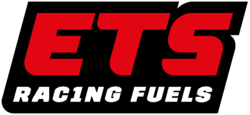
IMPORTER & DISTRIBUTOR OF

__________________________________________________________________________________________________________________________________________
Understanding Race Fuel
Energy, Vaporisation & Combustion
Combustion energy, vaporisation heat, combustion speed are 3 very important and related parameters to gain performance:
An Engine is an energy converter, from chemical energy in gasoline, to kinetic energy (movement of piston), then movement. The conversion is performed by a combustion reaction.
The combustion Energy is the energy released during the combustion of fuel per kilogram of gasoline (and not per volume). It is the energy available in the fuel. When the lambda (Air/Fuel ratio or richness) value is 1 (stoichiometry), it is called specific energy (Es). The higher it is, the more performance you will gain. You should know that generally the most energetic molecules have the lowest octane numbers (some exceptions for very high prices). You must then choose the right compromise between the minimum octane to avoid engine knocking and the highest specific energy (this rule is only valid for unleaded fuels).
Vaporisation Heat is the heat taken from the engine to vaporise the fuel (from liquid phase to gaseous phase). The higher it is, the more it will cook down the engine, and particularly at high revs and the more it improves the cylinder filling (mini turbo effect). Vaporisation heat is very high for oxygenated compound.
This allows an exhaust gas temperature decrease and limits the loss of power at the end of the race.
Combustion speed: A piston thermal engine is a very bad energy converter (only 30-35% efficiency). The higher the combustion speed is, the better the efficiency is, thus a gain of performance. The pressure peak on the piston is then higher.
The spark advance needs to be modified as well and in most cases it has to be retarded. Indeed, you must absolutely make sure, that the piston pressure peak appears just after the top dead centre (a few V° degrees crankshaft). With a high speed of combustion fuel, if you don't modify the spark advance (moment when the spark plug ignite), the pressure peak will oppose on the piston's way up, and results in a low conversion efficacy.
One Fuel - One unique Mapping
To obtain the best out of a racing fuel it is imperative to tune the engine to the fuel. Preferably by an engine tuner. This is an important step which is called engine mapping (ie 4 stroke engines with fuel injection and electronic ignition) or change the jetting, needles (carbureted engine) and spark advance.
If this step is skipped, you might not see the gain of performance from the fuel, and even damage your engine (mixture too lean if not enriched, operating temperatures too high).
Octane
Be aware that THE OCTANE NUMBER IS NOT A VALUE OF POWER.
It is a value that will let you know how high the compression ratio you can use, it is the higher compression ratio that will give you more power.
In the case of a high compression ratio engine, like every racing engine, a racing fuel will be ESSENTIAL if you don't want to burn your piston by detonation or knocking.
From a chemical point of view, the molecules with the highest octane numbers are in general, molecules releasing little energy during their combustion. The higher the octane number is, the less energy you will have.
Therefore, if your engine requires only octane numbers of MON 89 and RON 102, don't waste the fuel's energy by using a MON 94 and RON 108 fuel !!! You won't gain any performance. Burning this higher octane fuel will release less energy than a lower octane fuel.
Oxygen
Oxygen content will give you a more precise idea of the power you are looking for. Especially for normally aspirated and 2 stroke engines.
Oxygen in fuel is presented in the form of an oxygenated compound. The oxygen atom is present within the molecule of the chemical compound and not under the form of dissolved gas.
With oxygenated fuel, it is like enlarging your carburetor or aspirating more air into your engine. When you bring an additional source of oxygen into the engine, you need to enrich the air/fuel mixture. You will then burn more fuel and obtain extra power, including at high RPM, because of the cylinder filling improvement (mini turbo effect by cooling of the load).
Generally, all pump stations and Avgas 100LL aviation fuels do not contain oxygen except E10 and E85. For high altitude competition (where there is less oxygen) our oxygenated fuels will bring more power.
For any power craft (jet ski) or powerboat fuel, we do not recommend the use of ethanol fuels such as E10, E85 or ETS fuels dedicated to motorcycles and cars, you may experience problems such as water in the fuel tank, or injection pump & injector corrosion.
Storage
Once a drum is opened it will keep its initial properties for about 3 Months, then it will still be useable but will start losing a few percent of its benefits.
Air is responsible for fuel oxidation, to minimise the impact after opening a drum, store the remaining fuel in a smaller drum where there will be the minimum amount of air inside.
